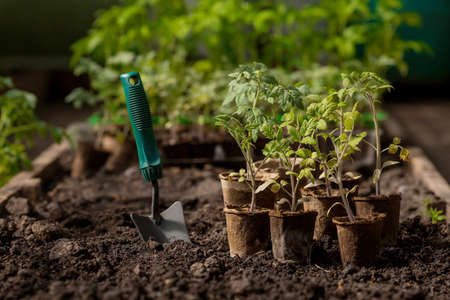Understanding the British Winter Garden
When chilly winds begin to sweep across the UK and daylight hours grow short, many might think it’s time to hang up the gardening gloves. However, the British winter garden is a world of quiet resilience and surprising growth. The unique climate—marked by unpredictable rain, occasional frosts, and mild spells—creates both challenges and opportunities for winter gardeners. In these colder months, it’s the cold-hardy vegetables that truly come into their own. British winters rarely plunge to extreme lows compared to other northern countries, which means that with thoughtful planning and a little encouragement, certain crops not only survive but thrive. Understanding local microclimates, soil drainage during persistent rains, and protection from biting winds are essential. It’s this careful observation of nature’s rhythms that turns winter gardening in Britain into a nurturing adventure—a chance for families to connect with the land even as the year grows cold, watching sturdy greens and root veg push bravely through the frost.
2. Selecting the Right Cold-Hardy Vegetables
One of the joys of winter gardening in Britain is discovering how certain vegetables thrive in the cool, crisp air. Choosing the right varieties not only ensures a bountiful harvest but also offers an opportunity for family members to connect with traditional British crops and seasonal rhythms. Let’s explore some classic winter vegetables that are both hardy and flavoursome, making them perfect companions for your garden through chilly months.
Kale: The Resilient Green
Kale is a staple in many British gardens due to its remarkable ability to withstand frost and even improve in flavour after a cold snap. Children often delight in watching these curly or flat-leaved greens stand tall against wintry winds, inspiring resilience both in plants and people.
Brussels Sprouts: A Festive Favourite
No British winter vegetable patch would be complete without Brussels sprouts. These mini cabbages mature slowly, developing their best taste after being touched by frost. They’re often at the heart of festive meals, sparking conversations about tradition and togetherness as families gather around the dinner table.
Leeks: Sweetness in the Cold
Leeks are another beloved option, bringing subtle sweetness to hearty stews and pies. Their long stems bravely poke through the soil even when temperatures dip, serving as a gentle reminder that growth continues quietly beneath the surface—much like our children learning new things each day.
Parsnips: Earthy Delights
Parsnips, with their creamy white roots, become sweeter after a frost, making them a treasured addition to Sunday roasts. Digging up parsnips together can become a cherished family ritual, fostering patience and anticipation as you reveal each hidden prize from beneath the earth.
At-a-Glance: Popular Winter Vegetables for British Gardens
| Vegetable | Best Planting Time | Harvest Period | Notable Features |
|---|---|---|---|
| Kale | Late Spring to Early Summer | Autumn through Winter | Tolerates frost; improves in flavour after cold spells |
| Brussels Sprouts | Mid Spring | Late Autumn to Winter | Matures after frost; traditional Christmas dish |
| Leeks | Early Spring | Autumn through Winter | Sweeter in cold weather; great for soups and pies |
| Parsnips | Spring | Late Autumn to Winter | Sweeter after frost; ideal for roasting and mashing |
By selecting these time-honoured cold-hardy vegetables, you’ll ensure your winter garden remains vibrant and productive while nurturing family connections rooted in nature’s seasonal cycles.
![]()
3. Preparing Your Garden for Winter Planting
As the crisp British air settles in and the days grow shorter, it’s time to nurture your patch for winter crops. Think of this as tucking your garden in with a warm blanket, much like you would your little ones before bed. Start by tending to your soil: remove spent summer plants, clear away weeds, and dig in plenty of well-rotted compost or manure. Good soil is the foundation for healthy winter veg like kale, leeks, and Brussels sprouts—each with their own quirky character, ready to brave the cold.
Choosing Sheltered Spots
Next, survey your garden for sheltered nooks. British winters can be blustery and damp, so position your beds near fences or hedges that block prevailing winds without stealing too much winter sun. South-facing spots are ideal, soaking up precious daylight while keeping your plants protected from chilly gales.
The Benefits of Raised Beds
Consider building raised beds if you haven’t already—they’re a true British gardening ally. Raised beds improve drainage (a lifesaver during soggy spells), prevent soil compaction, and make it easier to tend to your vegetables whatever the weather. Plus, they bring a sense of neatness and order—a bit like lining up wellies at the back door after a muddy adventure!
Protecting Seedlings from Frost and Damp
Finally, give your seedlings a helping hand as they settle into their new winter home. Use cloches, fleece, or even recycled plastic bottles with the bottoms cut off to create mini-greenhouses over young plants. Mulching with straw or leaf mould helps insulate roots and keeps excess moisture at bay—think of it as wrapping them up in a cosy scarf before they face frosty nights. By preparing carefully now, you’ll set the stage for resilient, thriving crops that will fill your family’s plates come winter’s heart.
4. Sowing, Growing, and Caring Through the Cold
Winter gardening in Britain is a wonderful chance for families to come together and discover how resilient both children and vegetables can be! Timing is everything: sow your seeds for hardy crops like kale, spinach, and broad beans between late summer and early autumn. Remember, each vegetable has its own perfect window—so pop on your wellies and check the back of your seed packets or use this handy table:
| Vegetable | Sowing Time |
|---|---|
| Kale | August–September |
| Spinach | September–October |
| Broad Beans | October–November |
Companion Planting for Winter Success
Just as a family thrives when everyone works together, so do plants! Pair winter-hardy veg with helpful companions: try garlic near your spinach to keep pests at bay or plant chives beside carrots to boost flavour and growth. These partnerships not only protect your crops but also give young gardeners a lesson in teamwork from nature herself.
Watering Wisely in Wet Weather
In Britain, winter means plenty of rain. While it’s tempting to leave watering to the clouds, make sure beds don’t become waterlogged—soggy roots can spell disaster. Teach children to check soil by poking a finger into the earth; if it feels damp below the surface, no need to water. Raised beds or adding mulch can help drain excess moisture and keep those roots cosy.
Keeping Spirits High During Winter Chores
The dark days can feel long, but winter gardening brings its own magic. Set small challenges—who can spot the first green shoot? Celebrate milestones with warm mugs of cocoa after working outdoors. Keep a scrapbook or diary together, recording what you’ve sown and how things grow. Let each child choose a “winter buddy” plant to watch over; soon enough, you’ll all be rooting for spring!
5. Harvesting and Sharing Winter Bounty
There’s a quiet joy in venturing out into the crisp British air, basket in hand, ready to gather the fruits of your winter garden. Timing is everything when harvesting cold-hardy vegetables. Root crops like parsnips and carrots can be left in the ground until you need them, their flavours sweetening after a touch of frost—a little winter magic straight from nature’s playbook. Leafy greens such as kale and cavolo nero are best picked when young and tender, snipped gently with child-sized scissors to encourage new growth. Brussels sprouts are a classic winter treat; simply twist them from the stalk when they’re firm and plump, just in time for a Sunday roast.
Harvesting is more than just gathering food—it’s a moment to connect as a family and celebrate tradition. Invite children to join in, letting small hands pull up rainbow-coloured carrots or pluck curly kale leaves. These shared activities spark curiosity and teach little ones about patience, resilience, and gratitude—values rooted deeply in both gardening and British culture.
Once your bounty is gathered, it’s time to bring the harvest indoors. Gather round the kitchen table and prepare vegetables together for a proper Sunday roast: crispy roast potatoes, earthy parsnips, sweet carrots, and buttery swedes—all grown by your own hands. Encourage children to help wash and peel, letting them take pride in seeing their efforts transformed into a comforting meal. And don’t forget the joy of sharing—consider gifting a bag of home-grown leeks or cabbages to neighbours or friends, embodying the generous spirit that gardens so often inspire.
As you feast on your winter vegetables, remember: each bite is more than nourishment—it’s a celebration of family togetherness, resilient plants, and cherished British traditions that span generations.
6. Overcoming Challenges in the Winter Garden
If you’ve ever found yourself gazing out of your window at a rain-soaked garden, wondering if those hardy cabbages and carrots stand a chance, you’re not alone! British winters can be famously damp and dreary, but every family can discover the joy of resilience right alongside their winter vegetables.
Embracing the Rain Together
Persistent rain is part and parcel of British gardening life. Instead of letting it dampen spirits, turn it into an opportunity for learning with your children. Don your wellies and waterproofs, and venture outside together to check on drainage around your vegetable beds or to gently shake excess water from leafy greens. These shared moments foster a sense of teamwork and show young gardeners that patience and small efforts can make a big difference.
Battling Pests as a Family Team
Even in winter, slugs, snails, and birds might try to sneak a nibble of your crops. Make pest patrol a fun family activity—search for tell-tale trails or set up bird-friendly deterrents like homemade cloches. Celebrate every little victory, whether it’s finding fewer nibbled leaves or spotting a helpful robin keeping pests at bay. Each challenge becomes a lesson in observation and care.
Lighting Up Short Days
The dark afternoons may feel endless, but they offer precious moments for family bonding. As daylight fades, gather indoors to plan next year’s garden together or get creative with colourful plant labels and seed packets. Use these quiet times to talk about how plants rest and conserve energy—just like we do—reinforcing the idea that growth sometimes happens beneath the surface.
Nurturing Resilience Through Gardening
Winter gardening in Britain isn’t just about what grows above ground; it’s about nurturing resilience within ourselves and our families. Celebrate small successes—a single fresh carrot pulled from frosty soil or the first signs of spring bulbs peeking through. Encourage each other with stories of perseverance, reminding everyone that even when conditions seem tough, growth is happening all the time.
So, take heart: with each rainy walk, every pest battle, and all the laughter shared under cloudy skies, your winter garden is building more than just vegetables—it’s growing strong family roots for seasons to come.


